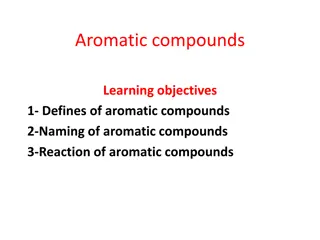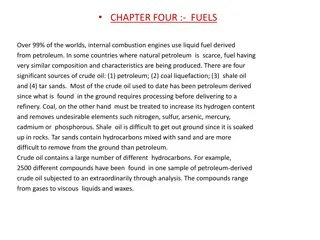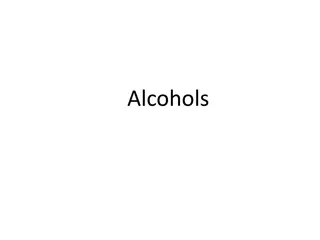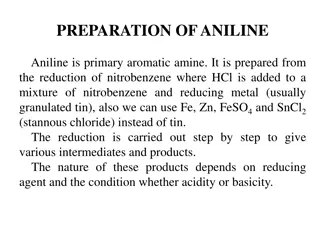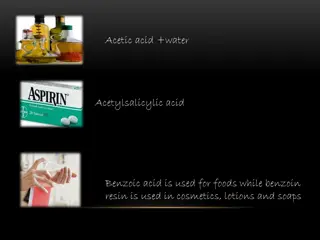Anthracene: A Polycyclic Aromatic Hydrocarbon
Anthracene, a polycyclic aromatic hydrocarbon, is composed of three fused benzene rings and exhibits unique properties such as a blue fluorescence when crystallized with benzene. It is commonly found in coal tar and has various industrial applications, including dye production, smoke screens, wood preservatives, insecticides, and coatings. The manufacturing process involves purification through sublimation and crystallization. Explore the characteristics and uses of anthracene in different industries.
Download Presentation

Please find below an Image/Link to download the presentation.
The content on the website is provided AS IS for your information and personal use only. It may not be sold, licensed, or shared on other websites without obtaining consent from the author.If you encounter any issues during the download, it is possible that the publisher has removed the file from their server.
You are allowed to download the files provided on this website for personal or commercial use, subject to the condition that they are used lawfully. All files are the property of their respective owners.
The content on the website is provided AS IS for your information and personal use only. It may not be sold, licensed, or shared on other websites without obtaining consent from the author.
E N D
Presentation Transcript
Hydrocarbon it is made up of carbon and hydrogen only. Aromatic the molecule has alternating double and single bond all around the ring system. Polycyclic more than one ring system. Anthracene is a Polycyclic aromatic hydrocarbons that has three benzene ring fused together.
Anthracene is present in very small quantities (less than 1%) in coal tar. Anthracene oil is chilled to crystal. This oil also contains phenanthrene and carbazole. This is washed with solvent naphtha and pyridine. Finally, anthracene is purified by sublimation.
Anthracene is a colorless solid (mp 217*c, bp 340*c). It exhibit a fine blue fluorescence when crystallized with benzene. Insoluble in water. Soluble in alcohol and ether.
Halogenation : Nitration :
Oxidation : Reduction :
For manufacture anthraquinone which is used as dyes. Also used for making dyes. Used as smoke screen. Used as preservative in woods and lumber. Used as insecticide for crops. Also as coating materials.
Phenanthrene is an isomer of anthracene. The crystal treated with solvent naphtha which dissolves phenanthrene. Evaporation of this solution yields crude phenanthrene. Further, purified by recrystallization of the picrate from ethanol.
Phenanthrene is a colorless solid (mp 100*c). Phenanthrene gives blue fluorescence in benzene solution. Insoluble in water. Readily soluble in ethanol, benzene and ether.
Friedel crafts acylation : Nitration :
Used to make dyes, plastics and drugs. Also used as explosives and pesticides. Used to prepare bile acids, cholesterol and steroids. Phenanthrene is industrially important.


